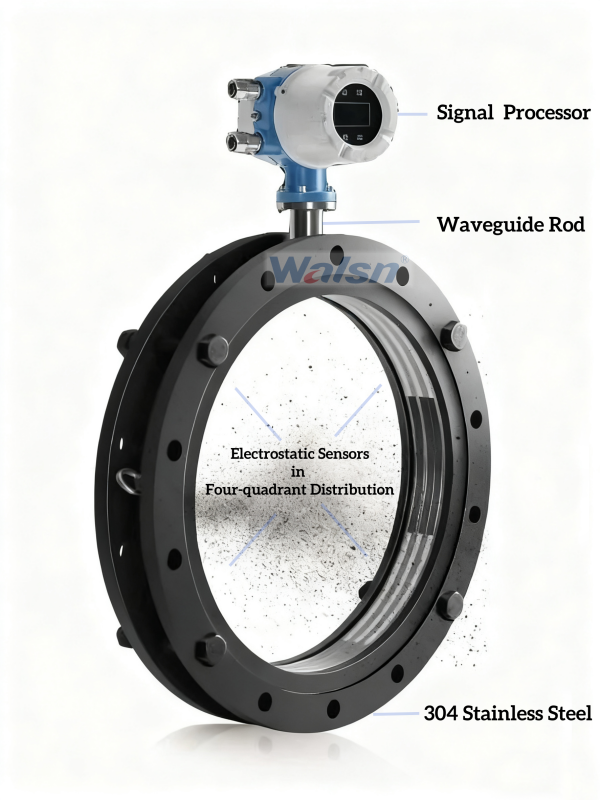 EN /
CN
EN /
CN
search the product
Search for what you are looking for here:
- Popular:EMF-SX-SOxygen AnalyzerUniMass-S
 EN /
CN
EN /
CN
Search for what you are looking for here:

In coal-fired power plants, precise regulation of the air-coal ratio within pulverized coal pipelines is critical to ensuring high efficiency, environmental compliance, and safe operation of boilers. However, traditional manual regulation often faces challenges such as difficulty in predicting air-coal imbalances, excessive air with insufficient coal leading to localized NOx increases, and excessive coal with insufficient air resulting in incomplete combustion, biased boiler combustion, and water wall slagging.
To help users overcome these challenges and leverage technical expertise in boiler digitalization, Walsn Energy has launched the Online Air-Powder Flow Measurement System. Based on advanced technology, it overcomes the "black box" dilemma of pulverized coal pipelines and achieves real-time visibility and precise controllability of the air-coal state. This provides an efficient solution for balanced boiler combustion. Its advanced dual-sensor technology forms the foundation for accurate detection.
The system is specially designed for harsh conditions of high temperature and high dust within primary air pipes. By integrating Electrostatic Sensor and Acoustic Emission Sensor technologies, the system delivers multi-dimensional monitoring functions:
Eectrostatic Sensor: Capable of capturing charge signals generated by coal powder friction in real time, thereby accurately calculating particle velocity with minimal errors and ensuring precise capture of the flow state of every portion of coal powder.
Acoustic Emission Sensor: By analyzing the acoustic characteristics of coal powder impacting the waveguide rod, it infers the fineness distribution of the coal powder. The fineness detection error remains consistently low, ensuring data-driven optimization of coal powder combustion efficiency.
High-Reliability Design: The sensors feature a specially designed arc shape to minimize wear from coal powder friction. Verified in practical applications, they can operate stably for years without maintenance, significantly reducing post-installation operational costs and offering both reliability and savings.
The system’s practical application covers multiple scenarios, supporting power plant efficiency upgrades. It has been widely deployed in numerous major coal-fired power plants and is compatible with various boiler capacity grades, including 300MW, 600MW, and 1000MW. Whether for energy-saving retrofits of traditional pulverized coal boilers or as part of intelligent supporting systems for new supercritical and ultra-supercritical units, it demonstrates strong adaptability.
For example, in a 1000MW unit that adopted the system, real-time monitoring and optimization of the air-coal ratio in each primary air pipe helped reduce NOx generation and improve combustion efficiency. Furthermore, the system seamlessly integrates with the DCS control system, with its data participating in real-time automatic adjustments of coal mill parameters, thereby enhancing the unit’s operational automation.
As a subsidiary of Walsn Group, Walsn Energy invites partners to collaborate in propelling the intelligent transformation of coal-fired boilers through technological innovation. The Walsn Air-Powder Online Detection System enables a decisive shift from manual, experience-based adjustments to precise, data-informed control. By breaking through the "black box" of pulverized coal pipelines, the system drives the evolution of plant operations from traditional practices toward a digital and intelligent future.
Moving forward, Walsn Energy remains committed to advancing power plant boiler digitalization. Through iterative sensor upgrades, refined algorithms, and expanded data applications, the company continues to enhance the system's precision and intelligence. This ongoing development provides coal-fired power plants with efficient, environmentally sound, and safe operational solutions, supporting the energy industry's green, low-carbon transition and establishing transparent management as the new standard.